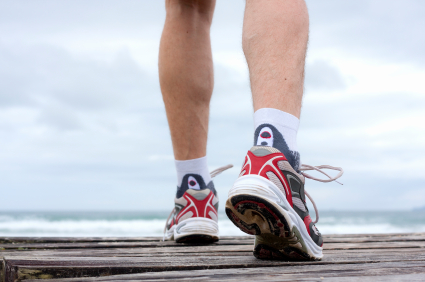Sometimes a slight foot or ankle twist can create a highly painful condition called Cuboid Syndrome. It is common and often misdiagnosed. Fortunately, I can remedy the problem, usually in my office, with careful manipulations of the foot.
Many times I see people who twisted their foot inward stepping off a curb, or a little ridge in their garage, or something similar. Sometimes right away and sometimes after a little while, they feel pain along the outside of their foot. There may be some swelling and the area may be black and blue. Sometimes there is minimal swelling. The pain seems to get worse over a period of one to several months. People often wonder how their foot could be still painful after a relatively minor twist.
The source of this pain is the cuboid bone, a bone on the outside of the foot which acts as a keystone for this area. The joint between the cuboid and the heel bone is not particularly strong. It is relatively easy for the cuboid to slip down and inward out of position. This creates tremendous irritation of the tissue around it, especially the very strong tendon of the peroneus longus tendon which passes through a notch in the cuboid bone and attaches on the bottom of your foot.
The good news? Cuboid syndrome is very easy to treat conservatively. Foot manipulation is a particular interest of mine and this is a condition that responds especially well to it. The cuboid bone can be manipulated back into place and many times the pain relief is absolutely instantaneous.
Though effective, repeated treatment is often needed. Once the cuboid bone has fallen out of position it is more likely to slip again. Many times a shoe insert with a special cuboid pad is used to hold the cuboid in position. Most people require about three manipulations over a period of five weeks before the ligaments around the cuboid tighten up and hold the cuboid comfortably in place.